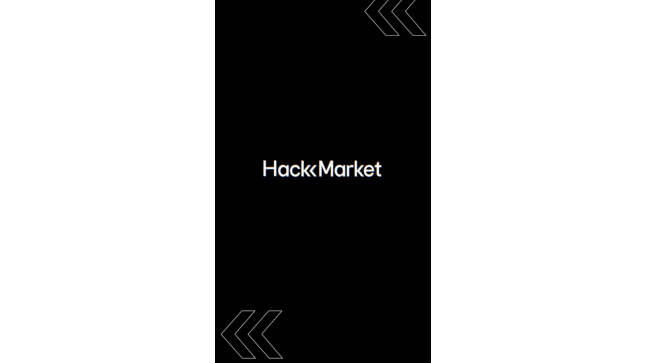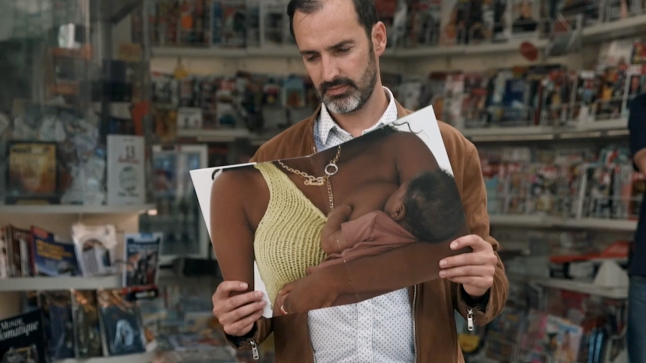UNEXPECTED MEETING
Reclaiming "Unexpected Encounters"
That Have Drastically Decreased Due to Digitalization.
The geranium flower belongs to the genus Pelargonium, which derives from the Greek pelargo (stork), supposedly because the seed head after the plant flowers is long and pointed like a stork’s beak. In floriography, the yellow geranium flower symbolizes “an unexpected encounter,” and one could argue that the concept of storks delivering babies that we have all heard of is connected to the idea of a chance encounter. Contrary to their elegant appearance, geraniums also give off a smell that insects are adverse to, giving some varieties potential insect repelling properties. The gap between the flower’s appearance and the surprising effect of its scent is a curious combination, perhaps lending the geranium a certain kind of unexpectedness.
When thinking about encounters, we often separate them into the unexpected and the expected. Expected encounters are desired, planned, and ultimately carried out, while those that are unexpected are not intentional and happen by chance. Some opinions say nothing is by chance, and that a complicated interweaving of various factors means any encounter is inevitable. Still, I can’t deny that the idea of the unexpected encounter is an exciting one. At times, it’s the incalculable things that spark inspiration. “Serendipity,” a word that has found its way into the vernacular of Japanese business, similarly refers to the phenomenon where a series of coincidences leads to something of value that is different from what you first set out to find. As such, when people share their experiences with serendipity they are often about them being guided towards fortuitous outcomes.
The word “serendipity” was actually coined in 1754 by the English writer and politician Horace Walpole. It comes from a fairy tale he read as a boy called The Three Princes of Serendip, a tale of adventure where princes from Serendip (Ceylon, or present-day Sri Lanka) keep encountering unexpected things along their journey. A combination of their wisdom and their accidental findings ultimately lead to the discovery of new knowledge that they had not been searching for. That brief summary alone is exciting, and it is heartwarming to imagine the story filled with happiness that ensues.
Perhaps our hopeful expectations for coincidence is in defiance of the fixed lifestyles of today. Another factor is that even as we begin to question fixed conventional ideas on what is right or wrong and the like, customs of all sorts are left untouched in insular environments. This has become commonplace over the years. And it may have become reinforced further, killing any momentum, or will, to try to undo those problematic conventions. However, even in such insular communities, the COVID-19 pandemic has forced many of these environments to switch over to a “new normal.” This may be a paradigm shift that resulted from people in already oppressed environments jumping at the chance for change. The relatively recent Japanese buzzword oya-gacha (random parent vending machine) refers to the fact that children can’t choose their parents. There is a pervasive feeling of resignation that the environment you are born in determines the rest of your life. But on the flipside, there has been a clear upsurge in the younger generation of jobseekers who are not scared of challenging themselves. With a positive “where there’s a will, there’s a way” kind of attitude, they choose to establish their own ventures or startups individually instead of seeking careers in big established companies that were previously highly sought after. This trend seems to be on the other side of the coin that represents the chaos of the current times.
But regardless of an increase in youth who choose to take on unknown, unstable environments, predetermined “tracks” designed to guide people are still very much present. Lines from old TV shows often had characters asking why they should live life on tracks laid down by someone else, in defiance of rules of the world. However, I feel like there is actually a different phenomenon today where people get stuck circling around on preexisting tracks. By this, I am referring to filter bubbles and echo chambers, which are purposefully produced based on algorithms and a vast amount of data, leaving people with incredibly narrowed perceptions. When people get stuck idling their time away watching YouTube videos or shopping online, unable to stop themselves from surfing the web, it’s a type of addiction designed to sustain user attention and keep them hooked. Unless they are able to realize this for themselves, they will be stuck in that never-ending loop.
On top of this, filter bubbles insulate people to show only the information they want to see through social media, and echo chambers result in increasingly biased opinions by echoing back like-minded views, interests, and information. These all enable the spread of disinformation and fake news, dividing people’s views and opinions. An “attention economy” is at the base of this issue, triggered by an advertisement model that gains profit by attracting people’s attention to get more clicks. Exacerbating this appalling environment is an attitude that cares only about profit, fixated on making people consume content with focus solely on whether the information is enjoyable or gratifying rather than whether it is actually correct.
I would like to take a look at some cases of “unexpected encounters” that shed light on the issues stemming from algorithms and alert people who have gotten stuck in questionable habits. The first is “HetzJaeger. Antifascist Algorithms.”
HetzJaeger. Antifascist Algorithms.


Fascism is on the rise again globally, particularly in Germany. The largest contact point with fascism is said to be music. Streaming platforms such as Spotify and YouTube actually have thousands of fascist songs available, and if that wasn’t bad enough, algorithms recommend these songs widely, increasing the chance of coming across such songs for users. This is precisely a musical version of the aforementioned filter bubble and echo chamber that is also happening. However, the act of enjoying music itself may rarely trigger criticism. As such, the fact that people have been in this kind of environment is left unaddressed and mostly unnoticed. Even though the streaming platforms knew about the proliferation of this issue, they did not take down these songs and bands and did nothing effective to prevent the spread of fascism.
Laut gegen Nazis (Loud against Nazis), an organization that combats fascism in all shapes and forms, took action to transform service provider attitudes on these platforms.
Their method for combating fascist ideas was ingenious. The idea was to use the very algorithm causing the vicious cycle to fight the problem. After analyzing how the music recommendation algorithm worked and gaining a lot of support, they tricked the algorithm with a strategy reminiscent of the Trojan Horse.
They started by creating a fake band called HetzJaeger that seemed to advocate Nazism and promoted its “debut” with a teaser song that adjust to the appropriate parameters of the algorithms. Then, they immediately attempted to connect with fascist music fans who selectively listened to such songs in one fell swoop, and gained instant and immense popularity.
But this band was a decoy. On January 30, the anniversary of Hitler’s seize of power, a month after HetzJaeger’s debut announcement, the algorithm automatically presented the song and its true message—to speak out against fascism—to all corners of the German fascist scene. The lyrics conveyed the outcry of public opinion against fascism and also demanded that streaming platforms tighten up their restrictions, resulting in a huge public response. Exposed to the surge of public scrutiny, streaming platforms were pressured and had no option but to remove 700 fascist songs and bands that had previously been available.
Of course, meticulous preparation was required to pull this off. The proprietary-set algorithms that these services use are naturally kept secret, which made analyzing them a challenge. They therefore used a music streaming data analysis tool called Chartmetric to painstakingly identify the most popular fascist rock songs, their fan base, and the most influential playlists in the genre. Then they brought experts on board from record companies that provide streaming services, as well as those with insight into the status of the German fascist activities, incorporating them into a team that screened YouTube and Telegram to understand how to optimize the Trojan Nazi band’s song for recommendation. Anti-fascist musicians wrote the music to release based on that data, so the song’s effectiveness on the algorithm was all but assured. A teaser of the resulting “fascist” rock song was set to lyrics using the most frequently used slang, trigger words, and syntax among fascist enthusiasts, and streamed on the major streaming platforms Spotify, SoundCloud, Deezer, Amazon, Apple, and YouTube.
Simultaneously, social media experts infiltrated major fascist groups on Telegram and Instagram to endorse the teaser, getting people to “like” their posts. It was an impressive strategy that integrated experts across fields, overcoming the challenge with the right people in the right roles. This kind of tactic that only allows one shot at success obviously requires thorough preparation and multiple layers of safeguards, and the meticulous preparation put into the project undoubtedly resulted in its triumph. In the end, awareness for this topic rose 500% and 200,000 supporters gathered to swiftly submit petitions calling for platforms to strengthen their restrictions against fascist content, achieving the aforementioned result.
Even if one were to come up with the idea of deciphering an algorithm and turning it as a weapon against the thing it usually promotes, the sheer amount of preparation required as well as the all-out use of technological skill and knowhow is daunting to think about. My hat is off to how they pushed with spirit through without giving up when it was never clear whether such a feat was fully possible. Meanwhile, it is exhilarating to see how the scheme so elegantly supplanted the songs and bands that existing fascist groups consolidated over, which essentially functioned as the forerunners of their ideology.
There are influencers everywhere that draw people in with powerful messages, with enough charisma to potentially make people forget about small variabilities in right and wrong. This scheme created a new “voice” to guide people to a morally correct path with a clear understanding of the power an influencer can have, using the narrative of the seeming emergence of a new forerunner in the scene, like something you might see in politics, which is brilliant. Laut gegen Nazis fabricated a new influencer to challenge opponents of the existing force, and after maximizing endorsement within the target group to steal fans, they did a one-eighty and put out a message that completely went against the ideology they had pretended to represent. To those in the fascist communities who had always celebrated their like-minded views within a bubble, this must have been an unexpected shock of shattering proportions. As an unexpected encounter that changes the way people think, this is an iconic example that gets the job done in a single, brilliantly executed, shot.
Filter bubbles are not limited to online searches. You could actually find yourself in a comparable environment in the real world. Thinking back, there is a surprising amount that has been imprinted in our brains as part of our lifestyles. Upon hatching, birds recognize the first animal they see as their parent and forms an attachment in a process called imprinting. An analogous phenomenon can happen in the human world. Children tag along with their parents and are taught how to keep their behavior in check. Judging right from wrong is also often done by learning from surrounding people such as friends and family, frequently creating a set of unspoken rules within a particular group. Meanwhile, it is very possible for there to be discrepancies between unspoken rules from different groups, and large deviations can develop into conflict. This is exactly the way people from two societies with different rules might each argue that they are in the right. They both believe that their side is correct and it can be extremely difficult to get them to agree.
However, imprinting in birds has its own rules and there can also be exceptions. For example, chicks that see a human first will identify that human as their parent, but they will not start following that parent around unless the human crouches down when they walk. It seems a human is too tall for the chicks to still identify an upright person as the parent. It also seems that if the timing is right, it is surprisingly easy to replace one parent with another, such as by showing the chick a certain set of behaviors while the substitute parent is present. Once learned and lived with for a long period of time, a rule becomes a habit that naturally continues without question. Such stimuli might actually work to subvert such blind habits, as shown by the Hack Market campaign.
Hack Market


Back Market is a global marketplace exclusive for refurbished products currently valued at 5.7 billion dollars, ranking 18th on Fast Company’s list of The World’s Most Innovative Companies of 2022. The refurbished products Back Market offers are devices originally returned for having a defect out of the box, or found with an issue before shipping. These are then repaired by the manufacturer to function properly, and their popularity is due to their slightly more affordable price tag. Being much more trustworthy in terms of quality and other factors compared to peer-to-peer secondhand marketplaces such as eBay, Back Market naturally appeals to consumers who wish to purchase hi-tech products at less cost.
However, Back Market’s goal was never to beat out rivals in the secondhand market, but to normalize sustainable consumer behavior. In other words, they wanted to overturn the image that purchasing a refurbished device was a “downgrade” that forced the buyer to compromise, or that there was some kind of negative tradeoff involved. The refurbished smartphones on Back Market are not only cheaper than new devices but also reduce your carbon footprint by an impressive 92%. The objective of their campaign was to prove that choosing their products is the “smarter option” so that people could be confident about opting to buy refurbished items.
In order to get this message across properly, Back Market hacked the way potential consumers shop in order to try to change their minds right before they were contemplating buying a brand new phone. The campaign was carried out in none other than the Apple Store, the “temple of new tech.” Back Market essentially infiltrated enemy territory and pulled a bold move that is satisfying to see.
On April 22nd, when the world’s attention was on environmental issues for Earth Day, Back Market carried out its Hack Market campaign. Using Apple’s own mobile technology AirDrop and new iPhones in Apple Stores, the campaign delivered messages that urged customers to make the more environmentally friendly choice. Every time a visiting customer picked up a product on display in the Apple Store, a set bot would airdrop a video ad on the terminal at hand, that urged customers to choose Back Market’s greener alternatives over new Apple Store products. Again, the place is not the eaves of the other party. It was a daring plan that went into the heart of the store, transforming the display models into Back Market’s own advertisement medium in a store-wide hack. Messages said things such as, “The salesperson won’t tell it to you, but you can buy this model while reducing its carbon footprint by 92%. Go refurbished!” The numbers concerning environmental impact that they used in the campaign were gathered over two whole years, sourced from studies by ADEME (The French Agency for Ecological Transition) on the environmental impact of buying refurbished versus buying new. Messages that aim for impact generally tend to suffer from exaggeration, but Back Market’s attitude of getting concrete facts and grounding their message in those facts feels sincere and trustworthy. Their commitment to doing their research to make a watertight claim instead of citing convincing-looking but dubious data of the kind you see everywhere is worthy of applause.
As a result, this one-day-only campaign on April 22nd succeeded in reaching approximately 5,200 customers at six Apple Stores across Paris, Berlin, and London. The extraordinary plan was reported by media around the world, and garnered more than 0.1 billion impressions on social media.
The Hack Market campaign not only succeeded in giving the brand exposure, but also raised the value of the refurbished product category. In the three countries where the campaign ran, interest in buying refurbished devices increased by an average of 27% and the word “refurbished” became a trending topic on Earth Day 2022. The take-home message here is the novel appeal and highly memorable effect of the campaign’s surprise element: receiving a “message from above” when visiting an Apple Store to buy a new smartphone and it turning out to be from a different company altogether. This again is a case where an unexpected encounter—the theme of this chapter—had a great effect on changing the way people think.
Here, I would like to introduce some examples that became the roots of hack campaigns such as “HetzJaeger. Antifascist Algorithms.” and “Back Market.” That is Burger King's “Google Home of the Whopper” in 2017.
Google Home of The Whopper


The campaign was triggered by voice-activated devices, such as Google Home, which were becoming popular in ordinary homes at the time. The majority of people who have these devices may have them in their living rooms near a TV. Burger King took notice of this, and at the end of the 15-second TV commercial, “OK Google, What is the Whopper burger?” was asked. That's how they deliberately launched a strategy to call out to Google Home. In response, Google Home began explaining the Whopper burger, shortly after the 15-second commercial ended. In other words, both commercials are made into 30-second commercials. It is a hack of major technology, and it is a ridiculous campaign that activates Google Home units in the United States and ignoring the intentions of their owners.
Google Home used the Wikipedia on the Whopper, but it seems that the article was drastically rewritten before the commercial aired. Of course, Google was outraged because it had not been consulted beforehand, and immediately updated the device so it would not respond to the phrase, resulting in the TV commercial being banned just three hours after it was broadcast. On the other hand, Google Home owners were also outraged by this. They continued revising the Burger King-edited Wikipedia page. They made fun of Burger King by adding negative words, all the while the words were read out by Google Home until it was banned.
It is an idea that typical of Burger King that is always approached with the stance of “not caring for getting flooded by comments,” but it is natural that this would happen, the brand has a unique stance where comparative advertising is natural, and it is not afraid of lawsuits, and this is not something that can be easily imitated. Triggered by getting flooded by comments, the effort garnered 9.3 billion impressions worldwide, and it became a trending topic on YouTube, Facebook, Twitter, and Google Trends. In addition, it was viewed 10 million times online in 48 hours after the TV commercial was released, making it one of the most talked about TV commercials in history. There was a fivefold increase in the number of references to Burger King, both positive and negative, and the first use of voice-activated technologies such as Google Home in product advertising sparked a debate over advertising and new technologies. It is different from a mere advertisement flooded with comments.
The examples introduced so far have used technology to create surprise new encounters, but did you know that hacks like these have actually occurred in the real world for a long time? Certain stunts were performed in the past, such as the once wildly popular flash mobs that had people in streets or at weddings suddenly breaking out in group dance routines. As I mentioned earlier, people see promise in the unexpected. When stunts and flash mobs were emerging as new categories, the recommendation engines used by Amazon and the like were making huge leaps in accuracy, and “serendipity” had become a buzzword. These may be slightly outdated examples, but let’s take a look at a couple of particularly memorable flash mobs and stunts that took place in cities: “Dance” by T-Mobile in the UK in 2009, and the “Push to Add Drama” campaign in 2012 that offered “a life with drama” by the American television network TNT to promote the channel’s launch in Belgium.
dance


One ordinary morning, a single commuter suddenly started dancing in the Liverpool Street station, London in the middle of rush hour. As if drawn to the dance, more dancing people joined in until there were about 300 people dancing in perfect unison by the time the dance ended. Stunned onlookers bobbed along to the beat, enjoying the moment, and impulsively shared the amazing event they were witnessing without thinking by phone and text messages. This was, off course, a stunt (momentary event) pulled off by mobile communications carrier T-Mobile, with the tagline “Life’s for sharing.” Although the mobile phone cameras of the time did not have quite as much functionality as the smartphone cameras today, when this surprise event happened in 2009, the number of mobile phone subscriptions worldwide had reached 4.6 billion and smartphone usage was starting to rise exponentially with the release of the iPhone 3GS. With this very early delivery of “shareworthy” content as if foretelling the rise of social media, T-Mobile may very well have been responsible for creating the culture of sharing content.
This mind-blowing yet very entertaining video recorded a whopping 13 million views on YouTube. T-Mobile's YouTube channel became the second most subscribed channel in the UK. Business-wise, T-Mobile’s stores around the country got a record number of customers that year. In addition, despite being the third most popular carrier in the UK at the time, the number of people who thought T-Mobile was the number one provider tripled thanks to the campaign, helping to boost the brand. Their sales also increased by an additional 52% compared to the previous year.
First and foremost, the aim of the event was to have people understand T-Mobile’s slogan, “Life’s for sharing.” A spoken one-sided explanation from the company would have been uninteresting and hard to understand, not to mention indirect. Instead, T-Mobile used a creative method to provide an experience that made people want to share the moment with a special someone, to incite a relatable “So that’s what that means!” moment. Although the moment itself was short-lived, the tactic made people want to and actually share their reactions with others, and expertly lured them toward that realization. The plan ensured relatability, the foundation on which communication today is built on, and even structured a proper narrative.
“Narrative” is also a keyword that crops up frequently in Japanese these days, but it has always existed as a concept and as a method, and its effectiveness can be seen in this example. At a glance, this endeavor may seem nothing more than a fun gimmick, but it actually follows all the classic rules of communication, cleverly combining the spread of smartphones and other opportune moments in society, communication trends generated from relatability, and the self-propulsion of powerful content. Even today, there is a lot that can be learned from this campaign. In today’s online-centric society, information of all kinds exist in a careless jumble on the web, much of which is shared with little thought. However, this T-Mobile campaign makes us pause and think, reminding us that in sharing, the most important factor is what it is that moves you and who you want to share it with. That very real connection between people leads to building true communities, becoming a powerful force that is completely different from impersonal digital interactions.
Push Add to Drama


The other example is from the American television network TNT, whose brand promise is “TV worth talking about.” TNT is renowned as a quality entertainment channel that delivers inventive drama series, highly-rated movies, and deeply insightful true stories. To promote its launch on the cable network in the Flemish Region of Belgium, TNT aimed to create buzz with their “Push to Add Drama” campaign. Based on the TNT catchphrase “We Know Drama,” they designed an experience opportunity that focused on creating dramatic entries, as well as delivering a story that the participant would be compelled to talk about, instead of one that TNT would tell on its own.
The result was a big red button placed in the middle of an exceedingly ordinary town square. A sign saying “Push to Add Drama” hung nearby. When curious people cautiously pressed the button, a dramatic and crazy scene unfolded right in front of them at dizzying speed. As soon as the button was pressed, an ambulance suddenly arrives at the square and tries to transport a sick person from a building, but the stretcher slips from the ambulance. The ambulance comes to a sudden stop to pick up the stretcher, and a bicycle collides with the ambulance, then the cyclist and the ambulance crew start to fight. Meanwhile, a woman wearing underwear that seems to have nothing to do with what is going on goes around in circles on a motorcycle. Then, a gangster car and a police car rush into the square and start shooting, and the cars, including the ambulance, run away all at once, leaving only one shot gangster behind. Several football players come out of the building and lift the shot gangster up and carry him into the building. The person who pressed the button is drawn into the scene as if they were actually a character in the exciting drama. But even before the initial shock has time to wear off, the scene rapidly wraps up, culminating in a huge curtain drop with the tagline “Your Daily Dose of Drama.” Although structured like a prank show, the scale and quality was that of a movie being filmed in real time.
It was actually filmed too, with the resulting YouTube video immediately getting 10 million views, 100,000 likes, and 1 million shares on Facebook. The video is entertaining, like a teaser for a reality TV show, demonstrating TNT’s high production ability and quality. Happening upon such a thrilling incident stirs excitement, impulsively making one want to share the experience. That simulated experience is surely enough to make people want to check out the channel at least once.
Both examples used what was new technology at the time in a way that linked to their taglines, and used narrative to build their brands. Mobile communications carrier T-Mobile’s “Life’s for sharing” and the drama channel TNT’s “Your Daily Dose of Drama” are both taglines that surely originated due in part to the rise of social media. Instead of forcing their own ideal image on consumers, each presented what kind of company they strived to be through an actual experience, designing and creating a live narrative phenomenon that encouraged people to describe their own reactions to the experience with others. The force of such “in-the-moment” stories, or narratives, spread to social media when it was just emerging, possibly influencing communities of people with similar values to unknowingly result in new encounters.
The current echo chambers and filter bubbles mentioned in this chapter are due in part to the way gathering information works online, but also in no small part to closed-minded views of recipients who only want to see news of a certain type. To some extent, everyone wants to avoid disagreeable information if at all possible, but perhaps that is resulting in information blocking. I am sure many people have experienced a situation where no amount of explanation could get a person to listen, but we must also not forget that getting people to listen requires some kind of hook or new maneuver to get people to notice in the first place.
Now, let me introduce the latest example used in a real place. “The Uncover” by the French maternity wear brand Frida, which hacked a real place and connected it to solving a social problem.
The Uncover


Frida is committed to making the lives of new mothers more comfortable by making useful nursing clothes. The Uncover was launched with the company's idea to raise awareness even further and make sure that new mothers know that the company supports them. While Japan provides nursing rooms in various locations around the country, breastfeeding in public places is a taboo in France, and nearly 50% of women are forced to breastfeed secretly in inappropriate places such as bathrooms. Furthermore, according to a 2022 survey, 17% of mothers were harassed for breastfeeding in public. Social media reported a woman being punched in the face for breastfeeding in public in Bordeaux, an Australian tourist being ejected from Disneyland in Paris, and a breastfeeding mother and baby being ejected by security guards from the Louvre Museum.
To promote understanding of breastfeeding in public places, Frida focused on people who read magazines, which is something often seen in public places. Frida decided to hack the magazine medium. The company produced a magazine called The Uncover, whose cover featured a trompe l'oeil picture that made the reader look as if they were a breastfeeding woman when they took the posture of reading the magazine. Working with feminist organizations, Frida have distributed more than 50,000 copies on the streets, train stations, coffee shops and newsstands in major French cities to enable everyone to do something similar.
The magazine featured six different mothers on the front page, with testimonials from mothers and medical experts, and a QR code leading to Uncover-project.com. The website provides links to petitions for legal protection of breastfeeding in public through testimonials. The magazine was provided to politicians, organizations, brands, hospitals, celebrities, influencers and the general public and was also spread on social media via the hashtag #theuncover. It was also shown at the World Breastfeeding Week event, and it gradually spread.
Compared to previous examples, the number is not so large: 200 million organic media impressions, 10,000 visits to the site and 50 media placements, including coverage on three major French national television channels. However, with this campaign, hundreds of public places have shown themselves to be friendly to breastfeeding. It has also led to solid results in the real world, with the protection of breastfeeding in public places and a draft law that could convict anyone who interferes with breastfeeding being formally introduced in Parliament that is currently awaiting a vote. Of course, Frida's sales have also increased by 30%, which is a good example of their contribution to both branding and sales.
LIBERATION WRAPPER


There is actually a similar case in Japan as the Frida initiative, so let me tell you about it.
This example was the 2013 “LIBERATION WRAPPER” by Freshness Burger. The idea was to sell hamburgers by making mouth-shaped wrappers for modest Japanese women, who were reluctant to open their mouths in public, contributing to sales. At first glance, it looks like just a funny advertisement, but the way the issue is set up and the approach to visualizing it shows that it is a similar idea to that of “The Uncover” mentioned above.
People tend to feel relief when things are within their expectations. However, putting yourself in that kind of environment eventually leads to never taking your chances again. You lose the courage to venture into something new. Even if not that extreme, it at least makes you less motivated to do so. If you put your faith in the unexpected, however, a seemingly expected encounter may present new value through some kind of action. And people may actually be waiting for such an opportunity in their subconsciousness. The world seems to have become a place where information comes first, with less opportunity to learn from experience. Resolving things according to an established plan is fine, but there is no room for innovation there. Just as the huge shift in society due to the COVID-19 pandemic changed people’s lifestyles, views, and values in big ways, perhaps in order to pioneer the future we must give in to the unexpected. We may also need to have that kind of open-mindedness to overcome the mental health challenges of the current environment. Of course, we in the communication and media industries must provide opportunities that lead to that kind of change, and I think it is very important right now to deliver unbiased information to users, particularly digitally. I strongly believe that this may be one way to prevent the progressive fragmentation of the post-COVID world.


